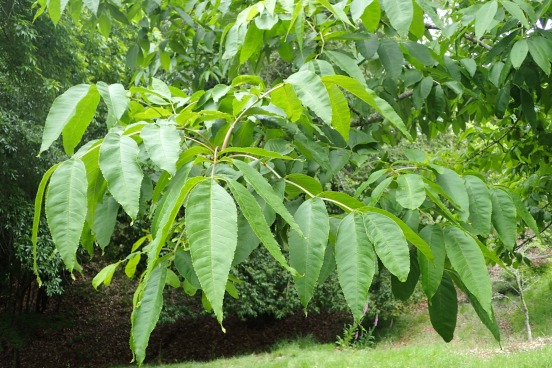The Calgary environment is a serious place to be a Tree. To survive here, Trees will have to be zone hardy, pathogen resistant and, yeah, lucky. See my Calgary from a Tree's perspective entry for more.
Because of this, the prudent new Tree buyer waits, finds a appropriate choice from varieties that have proven them selves over decades of testing. Let those who like to buy lots of new Tree varieties do so. The metaphor I want is the hockey team; in this town you'll never win a game unless your first string players stay on the ice. Let the grinders sit on the bench, the game's too tough.
The Griffin poplar breed at Brooks did not exhibit the winning characteristics that are required here. First, its immune system had been seriously compromised by the crossing of its parents' genes. The Tree was the all time champ for fungal canker susceptibility, cytosporia and septoria, both of which can be pretty nasty with hybrid poplars damaged this Tree severely.
The tree's form was the other problem. One of a long line of Trees manipulated to look like the classic Italian Lombardy poplar, its major trunk sections were poorly attached to the trunk and most attachments had large included bark sections. Included bark can be dangerous when we are talking about a 60 foot multi-stem poplar. Sold as the latest and greatest next best thing in its day, now there are very few left. I can not think of where one is or the last time I saw one (assume that as I move around the city everyday that I am doing a constant Tree inspection and inventory). Its distant cousin, the Swedish columnar aspen may be headed in this direction.
The Manchurian ash was very popular in the 80s and 90s, new untested, it was a beauty.With some of the thickest, shaggiest looking foliage, all round a handsome Tree. Related to the Green Ash, but nowhere near as tough, it seemed that we had got a new Tree. I went to Eagle Lake myself and made my selection, a gift for my parents. All went well the first few years, good growth, no problems. Constantly nagged about Tree care by his son, my father took optimal care of his new charge.
Then came the winter of, I believe 1996, a winter full of Chinooks and extremes. Spring approached and, as all Tree lovers, we waited, hopeful, would our Tree make it ? Finally it leafed out full and beautiful, a wonder... on one half of its crown. The other half was stone dead. The freezing and thawing repeated through the winter had taken its toll. Any who did survive were a few years later devastated by the Cottony Ash Psylllid, as was the Manchurian's cousin, the black ash. I don't think anyone is planting either of these Trees today.
A third quick mention would be the Columnar Siberian crab apple. Bred from some of the toughest apple stock on earth, the cross to make the column cost this Tree its immune system. I have seen them die in droves. it has the highest fire blight susceptibility and the weakest defense of any apple I have ever seen.
(Photo credit: “Fraxinus mandshurica kz01" by Krzysztof Ziarnek, Kenraiz, licensed under CC BY-SA 4.0.)









